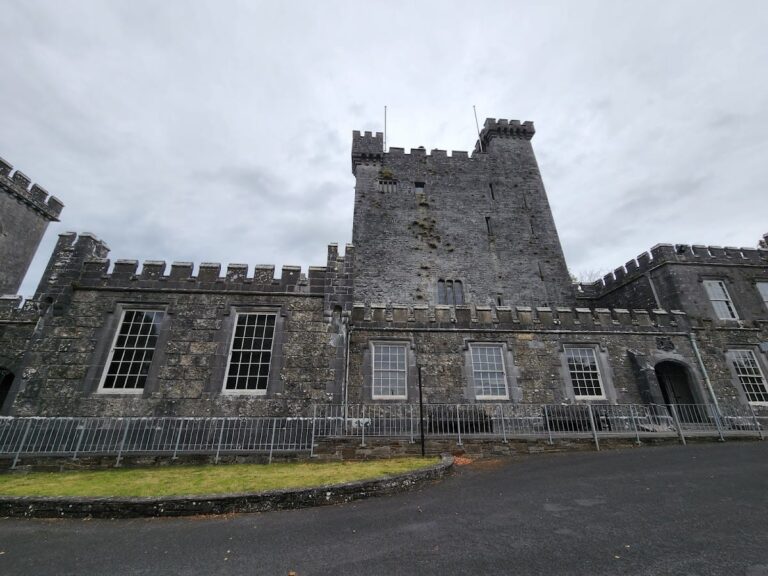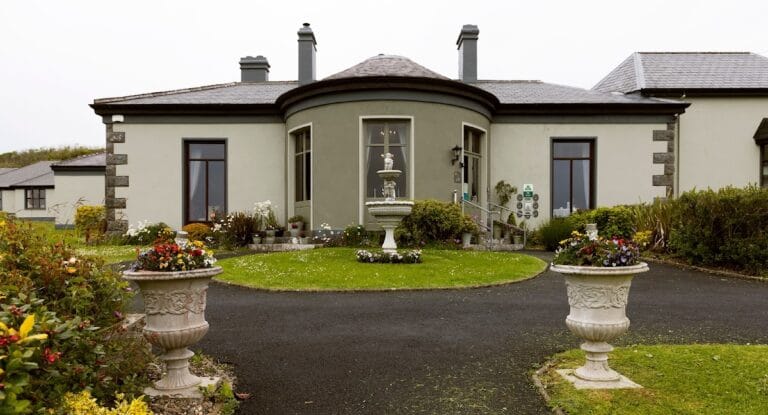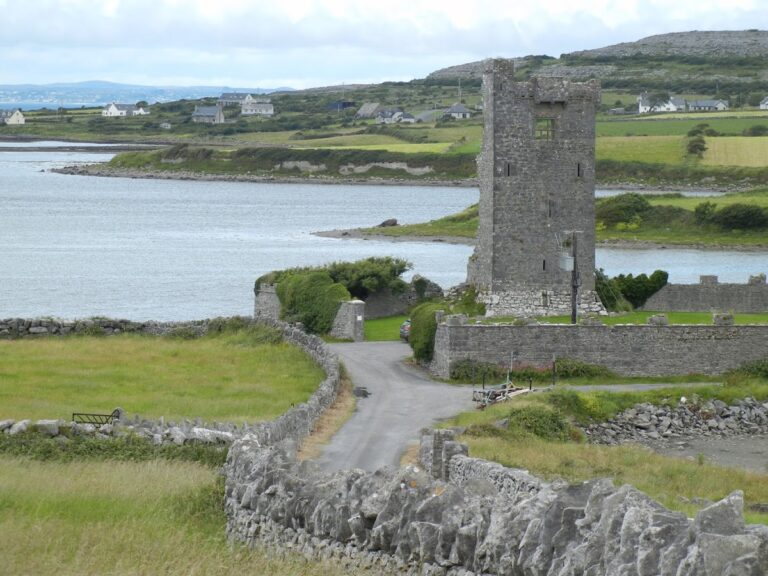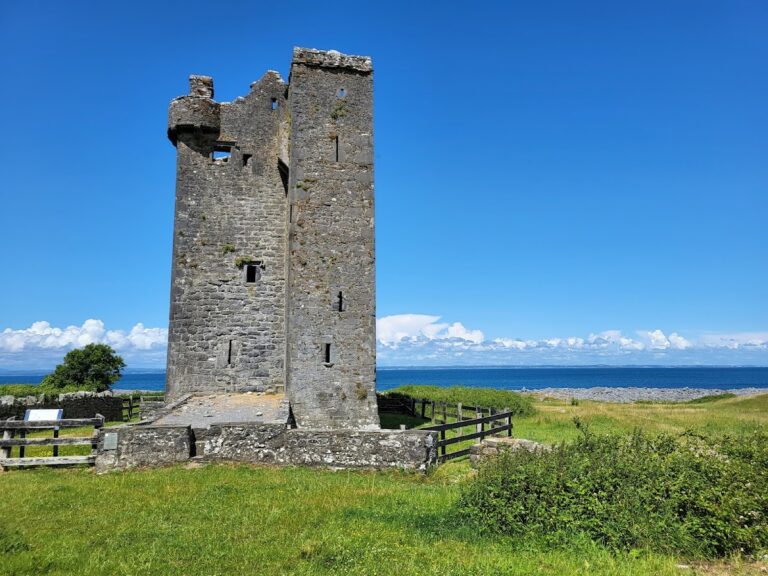O’Dea Castle: A Historic Gaelic Tower House in County Clare, Ireland
Visitor Information
Google Rating: 4.3
Popularity: Low
Google Maps: View on Google Maps
Official Website: www.dysertcastle.com
Country: Ireland
Civilization: Unclassified
Remains: Military
History
O’Dea Castle is situated in Mollaneen, near Corofin in Ireland. It was constructed by members of the native Irish O’Dea clan, a Gaelic family that controlled lands in this part of County Clare from the late Middle Ages.
The site holds historical significance far earlier than the castle itself. In 1318, more than a century before the castle was built, the area was the scene of the Battle of Dysert O’Dea. On May 10th of that year, an alliance of Irish clans defeated Anglo-Norman forces in a decisive engagement, resulting in the expulsion of Anglo-Norman presence from the region for over 200 years. This victory is a defining moment in local history, cementing Gaelic influence for generations.
The castle that stands today was erected roughly between 1470 and 1490 by Diarmaid O’Dea, the Lord of Cineal Fearmaic and head of the O’Dea clan. It served as a fortified residence designed to defend their lands during a time of rising conflicts. Throughout the later 16th century, the castle changed hands several times amid the turbulent politics of Ireland. In 1570, it was briefly taken by the Earl of Ormond, a powerful Anglo-Irish noble. However, by 1584 it had been reclaimed by the O’Dea family under Domhnall Maol O’Dea.
The religious and political upheavals of the late 16th and early 17th centuries affected the castle’s ownership. During the Nine Years’ War (1594–1603), control passed to Daniel Neylon, a Protestant Bishop. Eventually, the O’Dea clan regained possession once more. In the early 1640s, Conor Cron O’Dea, a noted Irish leader and owner of the castle, supported the Irish Confederates—those opposing English rule—and participated in the 1642 siege of nearby Ballyalla Castle.
Following these conflicts, the castle endured further hardship. After the 1651 siege and fall of Limerick to forces loyal to Oliver Cromwell, his soldiers garrisoned the castle. They deliberately damaged it, tearing down parts of the battlements, upper floors, and the main staircase, weakening its defensive capacity.
Ownership briefly returned to the Neylon family after this damage, but later, during the reign of King Charles II, Conor Cron O’Dea managed to recover the property. Nonetheless, the O’Dea family’s hold on the castle did not last. Following their support for King James II during the subsequent Jacobite–Williamite conflicts, Michael and James O’Dea lost control of the estate. The castle then passed into the hands of the Synge family, after which it entered a period of decline.
Centuries later, in 1970, restoration efforts were initiated when John O’Day, an individual from the United States, purchased the decaying castle. This led to its preservation as a heritage site, accompanied by the establishment of an Archaeology Centre within its walls.
Remains
O’Dea Castle is a traditional Irish fortified tower house standing approximately 15 meters high. It occupies a limestone outcrop roughly 6 by 12 meters in size, creating a sturdy natural platform for the stone structure. Built primarily from local stone, the tower house reflects typical defensive architecture of late medieval Ireland.
Originally, the castle included battlements atop its walls, several internal floors connected by a staircase, and defensive features that allowed occupants to survey and protect the surrounding lands. These battlements provided a defensive parapet for archers or lookouts, offering protection while allowing visibility over approaches to the castle.
However, in 1651, many of these features suffered deliberate destruction when Cromwellian soldiers partially demolished the battlements, the upper storeys, and the staircase during their occupation. This damage reduced the tower house’s defensive capabilities and residential functions.
The 20th-century restoration work focused on preserving the castle’s tower house form and reconstructing elements such as a partial wall walk—a walkway along the top of the walls used for patrol and defense—that allows visitors to follow a portion of the battlement path around the structure’s roofline. This restoration respected the castle’s original medieval design while stabilizing the ruins.
Adjacent to the castle lie the remains of the Dysert O’Dea Monastery, an ecclesiastical site connected to the area’s historical landscape. Archaeological trails around the castle and monastery provide insight into the broader medieval environment, highlighting the religious and social context of the site.
Inside the castle, the Dysert O’Dea Castle Archaeology Centre displays a remarkable collection of regional artifacts. These date from the Stone Age period, roughly between 1700 and 1000 BCE, through to pieces reflecting life up until 1922. The museum’s exhibits reveal the long history of human occupation in the area surrounding the castle, from prehistoric times through the medieval period and into the modern era.
Together, the castle tower and its surrounding archaeological features form a complex that illustrates both the martial heritage of the O’Dea clan and the longstanding settlement of the region. The preservation of the structure and its associated artifacts provides a valuable resource for understanding local history and medieval Irish architecture.










